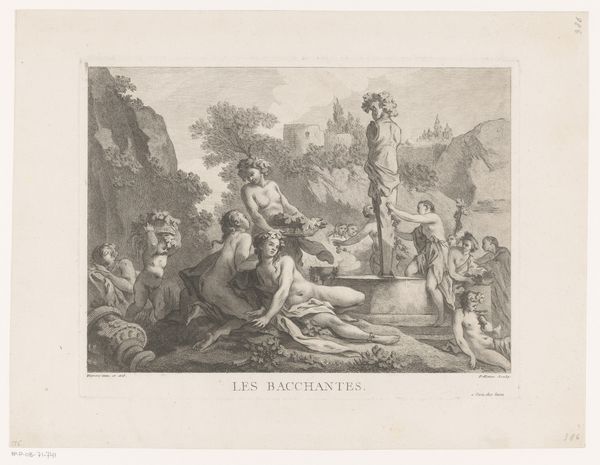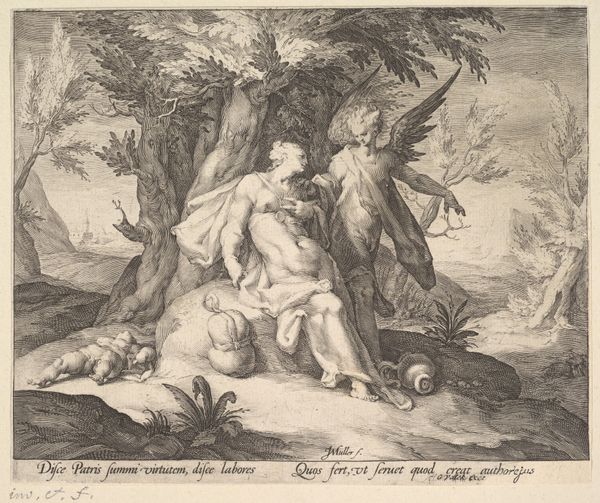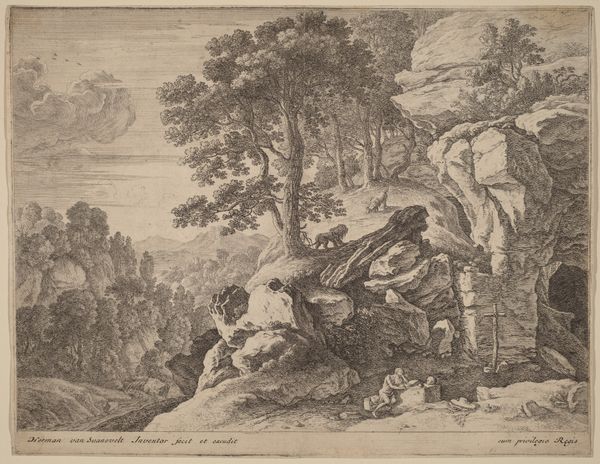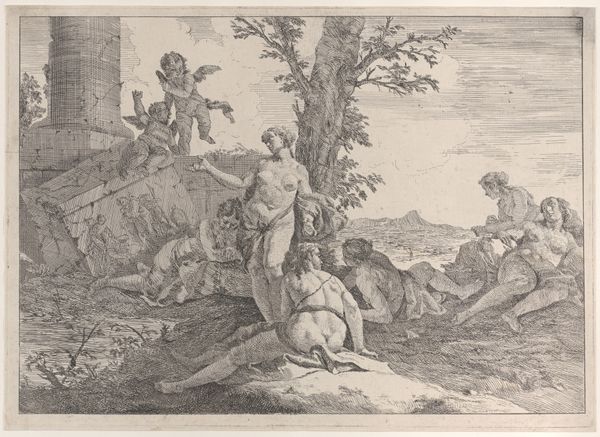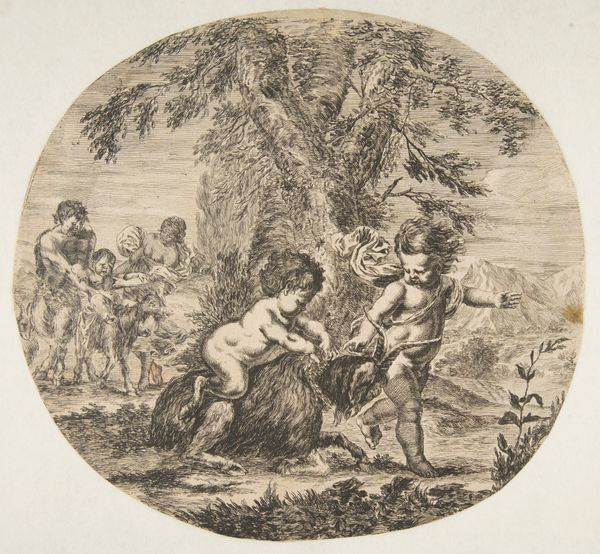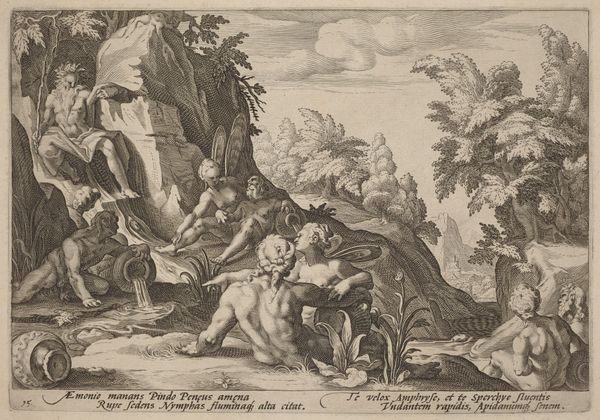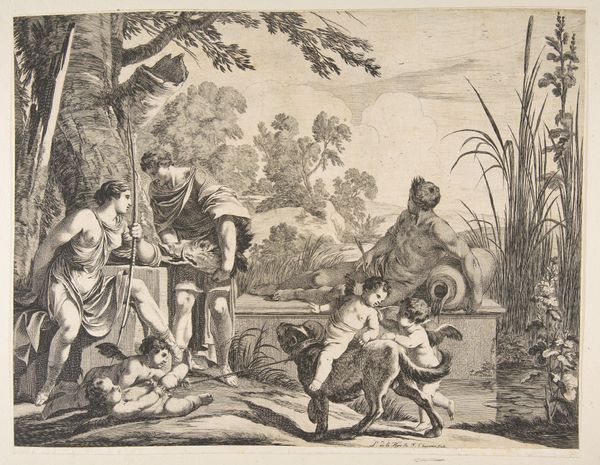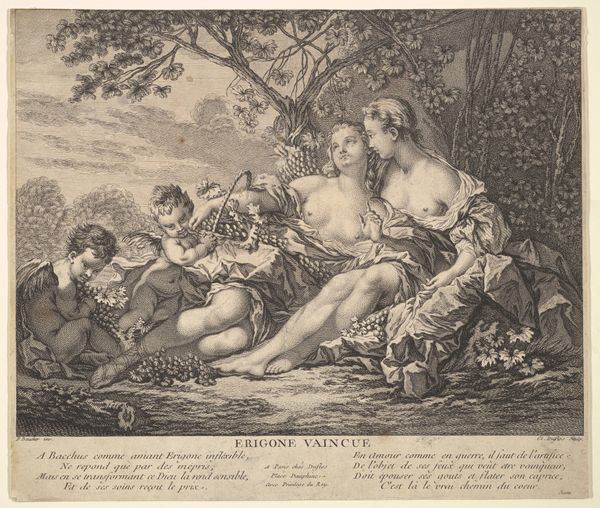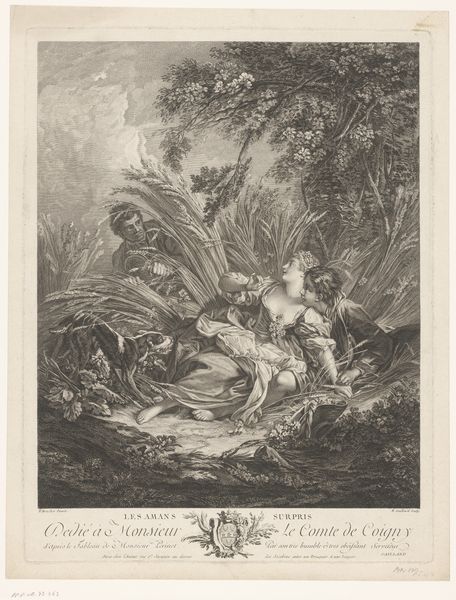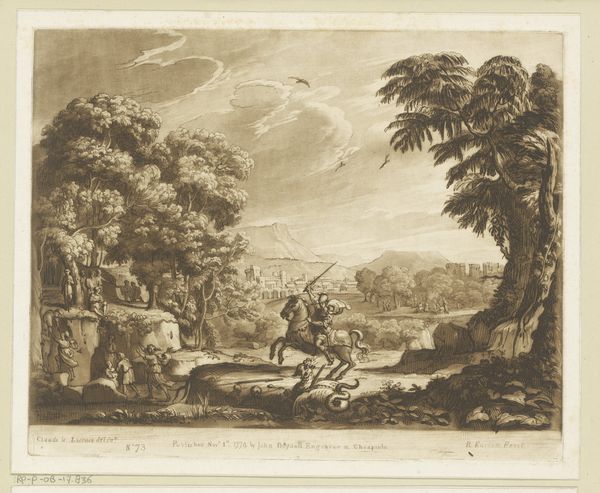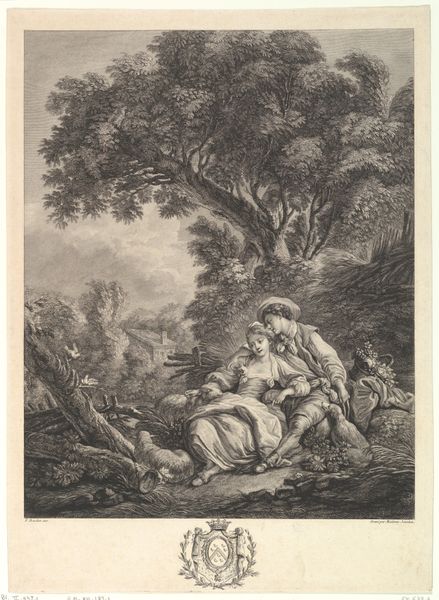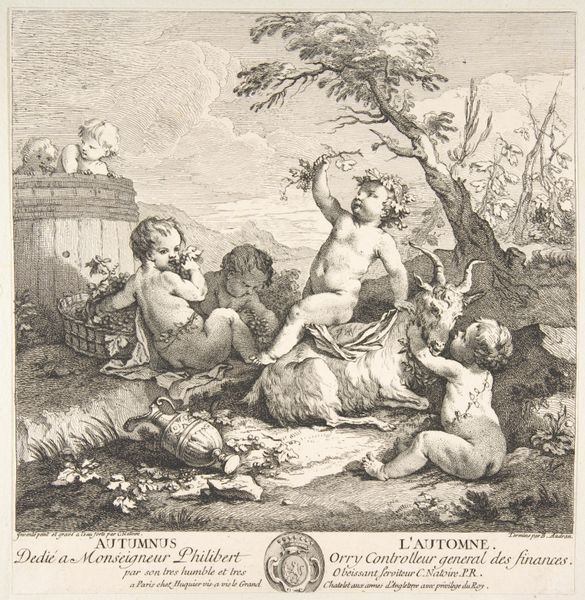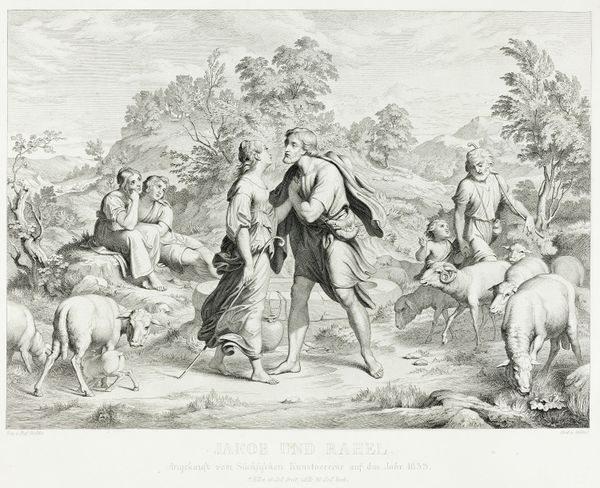
drawing, print, engraving
tree
drawing
landscape
figuration
child
genre-painting
engraving
rococo
Dimensions: Sheet: 9 1/8 × 10 3/16 in. (23.1 × 25.8 cm)
Copyright: Public Domain
Curator: Before us is an engraving known as "The Seesaw," dating roughly between 1733 and 1743, attributed to Pierre Alexandre Aveline. Editor: My first impression is of delicate balance. The light, airy strokes give it a whimsical feel, like a fleeting moment captured. The scale feels intimate, even precious. Curator: It's fascinating to consider the social context in which Aveline was producing these prints. Genre scenes like this were becoming increasingly popular among the bourgeoisie. This suggests a growing interest in depictions of everyday life, albeit an idealized one. Editor: Precisely. Looking at the medium – engraving – informs this reading even further. The laborious process itself implies a careful control and mass distribution, catering to the desires of a consumer culture and new market interests invested in accessible artworks for the home. Curator: What do you make of the subjects, these cherubic figures? Are they simply decorative, or could they represent something more? There is this historical representation that relates cherubic childhood with innoncence, playing to moral values, I wonder if the author tried to reinforce a status quo from his present. Editor: That's where it gets interesting. Their nudity challenges typical representations in a historical and contemporary market that dictates, produces, and regulates bodies as sexual. Also their carefree joy offers a respite from the pressures of 18th-century social expectations, suggesting maybe the enjoyment of playing and leisure in a context of high working demands and the consolidation of a productive lifestyle and capitalism. Curator: True, Aveline here might have tapped into desires within French society for playful experiences—that’s part of Rococo appeal—but maybe a celebration of idleness among classes that benefited from labor outside of them, such as bourgeoise. Editor: Absolutely, the artwork invites interpretations that reflect both societal desires and inherent contradictions, a complex web of play, leisure, labor and social norms being established for different classes, represented here only by children. It definitely leaves room for dialogue. Curator: It really does, revealing how the seemingly simple and joyful can open into really pertinent perspectives. Editor: Indeed, an art piece meant to provide beauty but can open questions to debate beyond aesthetics.
Comments
No comments
Be the first to comment and join the conversation on the ultimate creative platform.
